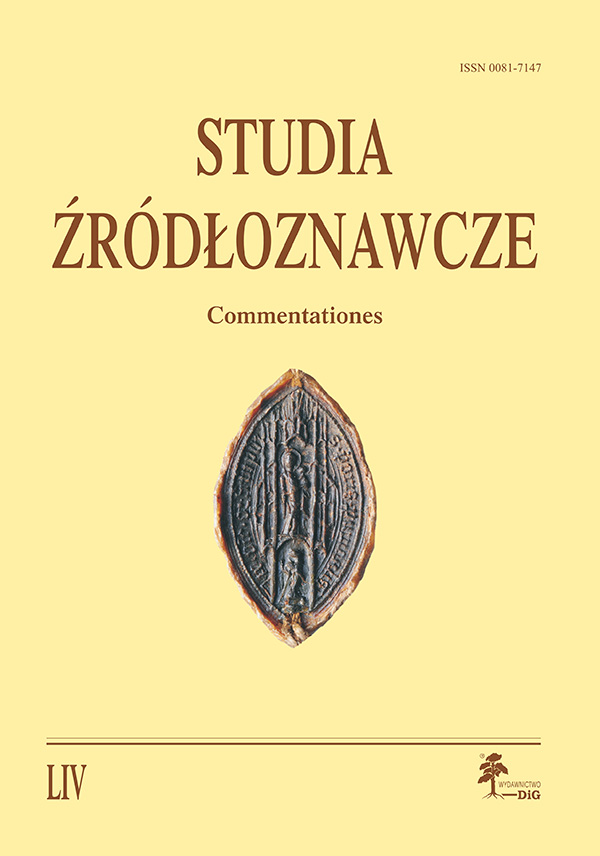Romańskie napisy haftowane na jedwabnych pasmach z grobu nr 24 w kolegiacie w Kruszwicy
Romanesque Embroidered Inscriptions on Silk Fabric Strips from Grave no. 24 in the Collegiate Church in Kruszwica
Author(s): Marek A. JanickiSubject(s): History, Archaeology, Cultural history, Middle Ages, 6th to 12th Centuries
Published by: Instytut Historii im. Tadeusza Manteuffla Polskiej Akademii Nauk
Keywords: Romanesque epigraphy; Romanesque tomb textiles; Kruszwica; Notker Balbulus;
Summary/Abstract: The article is a philological analysis and an initial epigraphic analysis of inscriptions embroidered on silk fabric found in 1960 in tomb no. 24 in the Romanesque collegiate church in Kruszwica. The preserved three pieces of silk (two are of identical length and one is a fragment) originally constituted probably a single object with the inscriptions arranged most likely into a sequence with a cohesive meaning (on the function of this object cf. articles by E. Dąbrowska and M. Cybulska and E. Orlińska-Mianowska in this volume). A philological analysis of the inscriptions preserved on the longer pieces of fabric makes it possible to ascertain that they comprise rhythmic-versification units. Inscription no.1 is in so-called rich hexameter, while inscription no. 2 is an incipit of a hymn to The Holy Spirit, attributed to Notker the Stammerer (Balbulus) from St. Gallen. The fragmentary inscription no. 3., barely several letters long, poses the greatest interpretation problem owing to the state of its preservation, which (according to B. Kürbis, who witnessed its discovery) could have been quite different than its present-day version. For this reason it seems possible to decipher the fragment in question in two ways, and the place which inscription no. 3. could have originally held in the sequence of inscriptions remains of a closely connected question. An epigraphic analysis of the inscriptions written in Romanesque capitals with elements of the uncial indicates their imitative execution (i.a. an error in the word: spiritus in inscription no. 2), albeit with the use of rather sophisticated lettering (the letter P). The shapes of the signs permit a restricted establishment of the time of the origin of the inscriptions, since some occur in codex writing and epigraphic much earlier than could be the date of the strips of fabric from Kruszwica (A in: gracia from inscription no. 2). By referring to a typology of Romanesque epigraphic writing presented by Rudolf M. Kloos, codex and epigraphic comparative material (which should be considerably expanded) allows us to propose an approximate time of the origin of the inscriptions as not later than the second half or the end of the twelfth century, especially if the object to which the discussed inscriptions belong had been imported from the West.
Journal: Studia Źródłoznawcze. Commentationes
- Issue Year: 2016
- Issue No: 54
- Page Range: 41-49
- Page Count: 9
- Language: Polish

